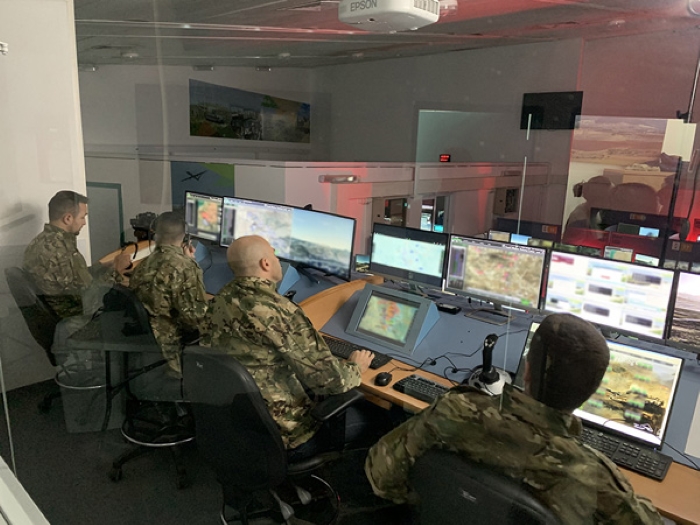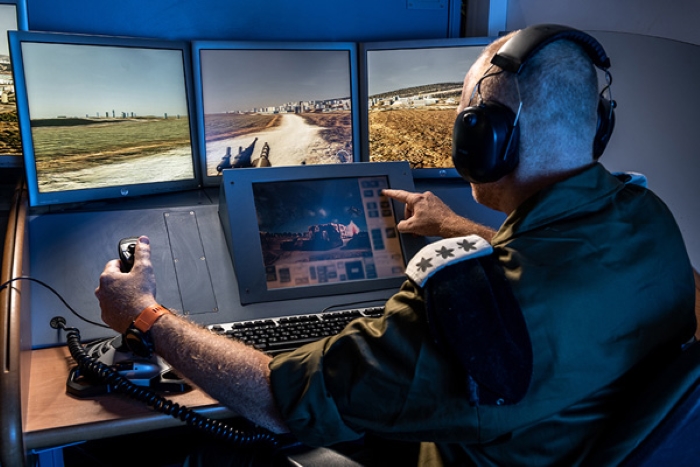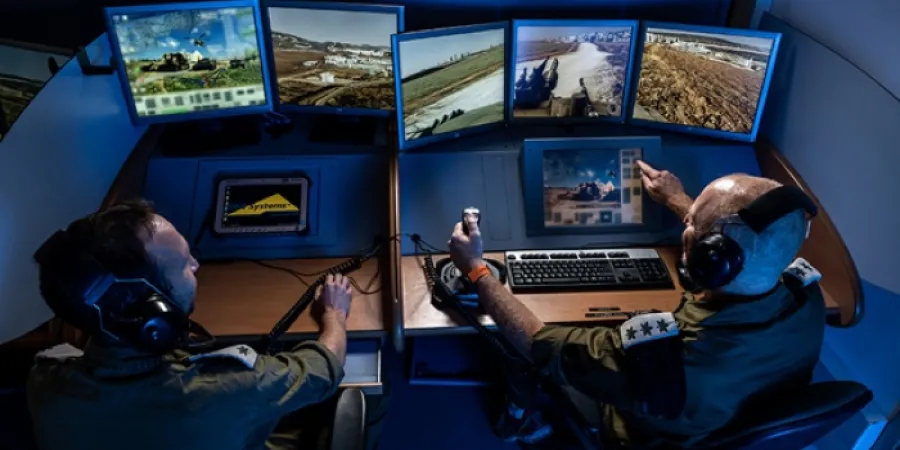IDF Commences Exercises in Elbit's New Brigade and Battlegroup Training Center
The center provides commanders and their staff with a realistic operational picture, enables them to operate a range of assets, and compels them to respond to real-time changes, thus testing their ability to adapt to the challenges of battle
IsraelDefense
| 20/07/2020
Elbit Systems said Monday that the Israeli Defense Forces (IDF) recently initiated a series of brigade level exercises in the company's new Brigade and Battlegroup Mission Training Center (B2MTC).
The new center immerses commanders, headquarters staff and two subordinate command levels in high-fidelity combat situations in actual battle zone territory. The B2MTC presents commanders and their staff with a realistic operational picture, enables them to operate a range of assets, compels them to respond to real-time changes and requires them to cope with tactical communications that are realistically impacted by various effects.

As military operations are becoming increasingly complex, and large-scale exercise opportunities occur less frequently due to cost, logistics and environmental constraints, Elbit's center provides armed forces with a flexible and scalable solution to train commanders and their staff, together with combat support elements, for contemporary multi-domain warfare.
Supporting large-scale geo-specific terrain, dynamic weather and thousands of virtual entities, the B2MTC offers a uniquely engaging training experience for more than a hundred trainees at a time. The system emulates the realistic flow of information between levels of command and from a range of intelligence, target acquisition and fire functions, enabling complex, joint combat scenarios to be exercised. In-service tactical communication is simulated, with performance realistically impacted by cyber, bandwidth, terrain, weather and other effects. The exercise director can introduce dynamic, on-the-fly changes into the simulation, allowing commanders to test their ability to react and adapt to the challenges of battle. The after-action review and debrief mode offers synchronized playback of the entire exercise, providing trainees with meaningful insight into the consequences of decisions and actions.

The center provides commanders and their staff with a realistic operational picture, enables them to operate a range of assets, and compels them to respond to real-time changes, thus testing their ability to adapt to the challenges of battle
Elbit Systems said Monday that the Israeli Defense Forces (IDF) recently initiated a series of brigade level exercises in the company's new Brigade and Battlegroup Mission Training Center (B2MTC).
The new center immerses commanders, headquarters staff and two subordinate command levels in high-fidelity combat situations in actual battle zone territory. The B2MTC presents commanders and their staff with a realistic operational picture, enables them to operate a range of assets, compels them to respond to real-time changes and requires them to cope with tactical communications that are realistically impacted by various effects.

As military operations are becoming increasingly complex, and large-scale exercise opportunities occur less frequently due to cost, logistics and environmental constraints, Elbit's center provides armed forces with a flexible and scalable solution to train commanders and their staff, together with combat support elements, for contemporary multi-domain warfare.
Supporting large-scale geo-specific terrain, dynamic weather and thousands of virtual entities, the B2MTC offers a uniquely engaging training experience for more than a hundred trainees at a time. The system emulates the realistic flow of information between levels of command and from a range of intelligence, target acquisition and fire functions, enabling complex, joint combat scenarios to be exercised. In-service tactical communication is simulated, with performance realistically impacted by cyber, bandwidth, terrain, weather and other effects. The exercise director can introduce dynamic, on-the-fly changes into the simulation, allowing commanders to test their ability to react and adapt to the challenges of battle. The after-action review and debrief mode offers synchronized playback of the entire exercise, providing trainees with meaningful insight into the consequences of decisions and actions.




